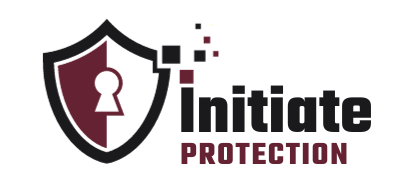As our lives become increasingly reliant on technology, our digital footprints grow larger and more permanent. With every click, post, and search, we leave a trace of our online presence that can have lasting consequences. But fear not, this article will guide you through managing and minimizing your digital footprint. Protect yourself now.
What Are Digital Footprints?
Digital footprints are the remnants of our online presence and actions when using digital devices. This can encompass personal information, online activities, and interactions with websites and social media platforms. These footprints can be created either unintentionally or intentionally, and can have lasting consequences as they can be saved, shared, and viewed by others. It is crucial to be mindful of and control our digital footprints in order to safeguard our privacy, uphold a positive online image, and secure our personal data.
Why Are Digital Footprints Important?
The significance of digital footprints lies in the fact that they create a digital record of our online activities, which can have both positive and negative consequences. These footprints reveal details about our online behavior, interests, and personal information, which can be utilized by advertisers, employers, and even hackers. Recognizing the importance of digital footprints prompts us to be more cautious about the information we share online and the platforms we use. By managing our digital footprints, we can safeguard our privacy, prevent identity theft, and maintain a favorable online image. Understanding the reasons behind the significance of digital footprints empowers us to make well-informed decisions about our online presence.
How to Manage Your Digital Footprints?
In today’s digital age, our online presence, also known as our digital footprint, is a significant aspect of our personal and professional lives. However, it is essential to manage and minimize our digital footprints to protect our privacy and security. In this section, we will discuss four practical steps to effectively manage your digital footprints. From conducting a digital audit to being mindful of your online activity, we’ll explore how to take control of your digital presence.
1. Conduct a Digital Audit
Conducting a digital audit is a crucial step in managing and reducing your digital footprint. Here are some steps to follow:
- Review your online presence: Search your name on search engines and social media platforms to see what information is publicly available.
- Assess your privacy settings: Check the privacy settings on your social media accounts and adjust them to limit the visibility of your personal information.
- Secure your devices: Ensure that your devices are protected with strong passwords and antivirus software to safeguard your personal information.
- Manage your online accounts: Delete any unused accounts and update the privacy settings on the accounts you actively use.
By conducting a digital audit, you can gain better control over your online presence and protect your digital footprints. Remember to regularly review and update your privacy settings to stay safe online.
2. Adjust Privacy Settings on Social Media
Adjusting your privacy settings on social media is crucial to protect your digital footprints and maintain online privacy. Follow these steps to safeguard your personal information:
- Review Privacy Policies: Familiarize yourself with the privacy settings and policies of each social media platform you use.
- Manage Profile Visibility: Adjust your profile visibility settings to control who can see your posts, photos, and personal information.
- Control Friend Requests: Decide who can send you friend requests or follow your profile to limit access to your content.
- Manage App Permissions: Regularly review and revoke access permissions for third-party apps connected to your social media accounts.
Pro-tip: It is important to regularly update your privacy settings as social media platforms often introduce new features and update their privacy policies. Stay vigilant to effectively protect your digital footprints.
3. Use a VPN
Using a Virtual Private Network (VPN) is an effective way to protect your digital footprint and enhance online privacy. Here are steps to follow:
- Research and choose a reputable VPN provider.
- Download and install the VPN software or app on your device.
- Open the VPN and select a server location to connect to.
- Establish a secure VPN connection.
- Ensure that your internet traffic is encrypted and your IP address is masked.
By using a VPN, specifically step 3, you can safeguard your online activities, prevent tracking, and encrypt your data, providing an added layer of security and privacy.
4. Be Mindful of What You Post Online
When it comes to managing your digital footprints, it is crucial to be mindful of what you post online. Here are some steps to help you navigate this aspect wisely:
- Think before you post: Consider the potential impact of your content on both your personal and professional life.
- Review privacy settings: Make sure to regularly check and update the privacy settings on your social media accounts to control who can see your posts.
- Avoid oversharing: Be cautious about sharing personal information that could be used against you or put your security at risk.
- Be mindful of photos and videos: Think twice before sharing images or videos that could potentially be misused or portray you in a negative light.
Remember, once something is posted online, it can be difficult to completely remove it. So, always exercise caution and think long-term when sharing content online.
How to Minimize Your Digital Footprints?
In today’s digital age, our online presence is constantly expanding and leaving a trail of digital footprints. While this can be beneficial in many ways, it also comes with potential risks and privacy concerns. In this section, we will discuss how you can minimize your digital footprints and maintain a level of control over your online presence. From limiting personal information shared online to regularly deleting unused accounts, we’ll provide practical tips to help you protect your privacy and manage your online presence.
1. Limit Personal Information Shared Online
When it comes to managing your digital footprints, it is crucial to limit the personal information you share online. Here are some steps to help you achieve that:
- Be selective: Only provide necessary personal information when signing up for online accounts or filling out forms.
- Privacy settings: Adjust the privacy settings on your social media accounts to control who can see your personal information.
- Think before you post: Be mindful of what you share online, avoiding sensitive information like your address or phone number.
- Use pseudonyms: Consider using a nickname or alias instead of your real name on certain platforms.
Remember, sharing less personal information online can help protect your privacy and reduce the risk of identity theft or online harassment.
In a true historical example, the Cambridge Analytica scandal in 2018 highlighted the importance of limiting personal information shared online. The company harvested data from millions of Facebook users without their consent, leading to privacy concerns and calls for stricter regulations on data usage. This incident serves as a reminder of the potential risks of oversharing personal information online.
2. Use Strong and Unique Passwords
Using strong and unique passwords is essential for safeguarding your digital footprints and online accounts. To create such passwords, follow these steps:
- Include a combination of uppercase and lowercase letters, numbers, and special characters to make your password more complex.
- Avoid using common phrases, personal information, or dictionary words that can be easily guessed.
- Make sure your password is at least 12 characters long to increase its strength.
- Consider using a password manager to generate and securely store your passwords.
- Do not reuse passwords for multiple accounts to prevent one compromised account from affecting others.
By following these steps, you can significantly enhance the security of your online presence and minimize the risk of unauthorized access to your personal information.
3. Be Cautious of Public Wi-Fi
When using public Wi-Fi, it is important to take precautions to protect your digital footprint and sensitive information. To ensure your safety, follow these steps:
- Disable automatic Wi-Fi connection on your device.
- Verify the network name and password with a reliable source.
- Use a virtual private network (VPN) to encrypt your internet traffic and safeguard your data.
- Avoid accessing personal or sensitive information while connected to public Wi-Fi.
- Enable two-factor authentication for added security.
Story: A friend once connected to a public Wi-Fi network at a coffee shop and unknowingly fell victim to a hacker. Their personal information was compromised, leading to unauthorized access to their accounts. Since then, they have been cautious and always use a VPN when connecting to public Wi-Fi. It is essential to prioritize your digital security to avoid such incidents.
4. Regularly Delete Unused Accounts
Regularly removing unused accounts is a crucial step in managing your digital footprint. This helps minimize potential risks associated with maintaining unnecessary online profiles. Follow these steps to guide you through the process:
- Identify dormant accounts on various platforms.
- Access the account’s settings and look for the option to permanently delete or deactivate it.
- Follow the platform-specific instructions to complete the deletion process.
- Remember to back up any important data or information before deleting the account.
- Keep a record of the accounts you have deleted for future reference.
What Are the Potential Risks of Not Managing Your Digital Footprints?
In today’s digital age, our online presence can have a significant impact on our personal and professional lives. However, many of us are not aware of the potential risks that come with not managing our digital footprints. In this section, we will discuss the potential dangers of neglecting your online presence, including the risk of identity theft, online harassment, and damage to your personal and professional reputation. By understanding these risks, we can take proactive steps to protect ourselves and our digital identities.
1. Identity Theft
Identity theft is a significant risk associated with poorly managed digital footprints. To protect yourself, take the following steps:
- Monitor your financial accounts regularly for any suspicious activity.
- Secure your personal information by using strong and unique passwords.
- Avoid sharing sensitive information, such as your Social Security number or bank account details, online.
- Be cautious of phishing scams and only provide personal information on secure websites.
A friend of mine fell victim to identity theft when their social media account was hacked. The hacker gained access to their personal information and used it to make unauthorized purchases. It took months for my friend to resolve the issue and regain control of their accounts. This experience highlighted the risks of identity theft and the importance of managing digital footprints and taking precautions to prevent it.
2. Online Harassment
Online harassment is a serious issue that can have detrimental effects on individuals. To protect yourself from online harassment, follow these steps:
- Be vigilant: Monitor your online presence, including social media accounts, and report any instances of online harassment.
- Keep personal information private: Avoid sharing sensitive information online, such as your address or phone number, to minimize the risk of online harassment.
- Use strong privacy settings: Adjust your social media privacy settings to limit access to your posts and personal information.
- Block and report: If you encounter online harassment, block the individual and report their behavior to the platform administrators.
- Document evidence: Keep records of any online harassment incidents, including screenshots and timestamps, in case legal action becomes necessary.
3. Damage to Personal and Professional Reputation
The potential harm to one’s personal and professional reputation is a significant risk when digital footprints are not properly managed. Inappropriate or offensive posts, pictures, or comments can damage one’s image and have a negative impact on personal relationships, job opportunities, and professional prospects.
It is common for employers, colleagues, and clients to search for information online, and any negative content can leave a lasting negative impression. To safeguard your reputation, it is important to be mindful of what you post online, regularly search for yourself on search engines, and consider adjusting privacy settings on social media platforms.
Taking a proactive approach to managing your digital footprints is crucial in maintaining a positive personal and professional image.
How Can You Protect Your Digital Footprints in the Future?
As we become increasingly reliant on technology, our digital footprints continue to grow and leave a lasting mark on the internet. However, with the rise of cyber attacks and data breaches, it is important to take control of our online presence and protect our personal information. In this section, we will discuss practical steps you can take to safeguard your digital footprints in the future. From staying informed about privacy policies to using privacy-focused search engines and browsers, we will explore various methods to minimize your online presence. Let’s dive in and learn how to protect ourselves in the digital world.
1. Stay Informed About Privacy Policies
Staying informed about privacy policies is crucial for managing your digital footprints effectively and protecting your online presence. To ensure you are well-informed, here are some steps you can take:
- Regularly review privacy policies of websites and online services to stay updated on any changes or updates.
- Stay updated on any changes or updates to privacy policies to stay informed and aware.
- Understand what information is collected, how it is used, and if it is shared with third parties to make informed decisions about your privacy.
- Consider using privacy-focused tools and browser extensions that provide insights into website tracking and data collection practices to protect your privacy.
- Stay informed about relevant privacy laws and regulations that may impact how your data is handled to ensure your privacy is protected.
Pro-tip: Stay informed by subscribing to newsletters or following trusted sources that provide updates on privacy policies and online privacy best practices. This will help you stay informed and make informed decisions about your digital footprint.
2. Use Privacy-Focused Search Engines and Browsers
Using privacy-focused search engines and browsers can help protect your digital footprints and enhance online privacy. Here are steps to follow:
- Choose a privacy-focused search engine such as DuckDuckGo or Startpage.
- Install a privacy-focused browser extension such as Privacy Badger or uBlock Origin.
- Disable third-party cookies in your browser settings.
- Use the private browsing mode or incognito mode when searching or browsing.
By utilizing these privacy-focused tools and techniques, you can minimize the collection of your personal data and maintain a higher level of privacy while browsing the internet.
3. Educate Yourself and Others About Online Safety
Educating yourself and others about online safety is crucial in today’s digital age. Here are some steps to help you get started:
- Stay updated on the latest online threats and best practices for staying safe.
- Teach others, especially children, about the importance of privacy settings and being cautious online.
- Encourage strong password habits, such as using unique and complex passwords.
- Teach responsible social media usage, including being mindful of what is shared and who has access to it.
Pro-tip: Regularly engage in conversations about online safety to reinforce good habits and stay informed about new risks.
Frequently Asked Questions
What is a digital footprint?
A digital footprint refers to the trail of information that is left behind when you use the internet, including your online interactions, posts, and activities. It can also include personal information such as your name, address, and photos.
Why is it important to manage and minimize your online presence?
Managing and minimizing your online presence can help protect your personal information and reputation. It can also prevent potential identity theft and cyberbullying.
How can I manage my digital footprint?
There are several ways to manage your digital footprint, including regularly monitoring your online activity, adjusting your privacy settings on social media, and being mindful of what you post online.
What steps can I take to minimize my digital footprint?
To minimize your digital footprint, you can limit the amount of personal information you share online, use a unique and strong password for all your accounts, and regularly review and delete old or unused accounts.
Are there any tools or resources available to help manage and minimize my digital footprint?
Yes, there are various tools and resources, such as privacy settings on social media platforms, identity theft protection services, and online reputation management tools, that can help you manage and minimize your digital footprint.
What are the potential consequences of not managing and minimizing my digital footprint?
Not managing and minimizing your digital footprint can lead to identity theft, online harassment, and damage to your personal and professional reputation. It can also make you vulnerable to cyber attacks and scams.







